By Junior Yearwood
Do you remember the transistor radio? For teens, it was an essential accessory – passport to hot tunes and popularity. For adults, it was a passport of another sort – to the news of the day, world events, baseball contests, talk shows and a chance to learn something useful. Static-y and limited to a handful of stations.
 Just as transistors have been succeeding by microchips, a third of all adults and 20% of smartphone users listen to radio via the internet. Half of them take radio in the form of podcasts, portable snippets of radio that they can listen to as they unwind at home (71%) or try to make a commute more pleasant and productive (45%). Some of us (*cough* Snowball *cough*) even use them to make time at the gym more bearable.
Just as transistors have been succeeding by microchips, a third of all adults and 20% of smartphone users listen to radio via the internet. Half of them take radio in the form of podcasts, portable snippets of radio that they can listen to as they unwind at home (71%) or try to make a commute more pleasant and productive (45%). Some of us (*cough* Snowball *cough*) even use them to make time at the gym more bearable.
In this month’s Best of the Web we will be presenting four business/financial podcasts – plus, as a bonus, a fifth podcast that you really want but can’t have yet (fingers crossed, Chuck). Each, we believe, stands out from the pack. With so many choices out there we decided to narrow our choices to candidates that met five criteria:
- they had to be from a respected source that was trying to inform you, and not just sell you some pet theory or subscription stock-alert system. That alone eliminated a multitude of podcasts.
- they had to be both informative and engaging, since we were looking for resources you’d want to turn to week after week.
- their content had to be reasonably up to date, which we defined as “at least weekly” (except for Bill Gross).
In addition (4) there had to be a solid accompanying website and (5) perhaps most importantly the podcast had to be available for multiple platforms. So regardless of your portable device you will be able to download and transfer any one of our picks to your handheld and listen on the go wherever you are.
For each podcast we will give you a general overview of the content and highlight specific areas that we think will interest you. We will also have some info on the host and give you our overall opinion of the presentation.
We would like to thank everyone for the great support shown to last month’s feature and encourage you to
contact me with suggestions, tips and advice.
 Working through the week
Working through the week
The Week Ahead from The Economist
Mondays, like rainy days, are sometimes difficult to manage. It’s the start of the week, a week of ups and downs challenges and hopefully a few pleasant surprises. You need to be sharp and focused and you need to be on top of your game. Keeping up to date with current affairs that affect the global economy can help you do just that. And The Week Ahead podcast from The Economist is a simple, convenient and quick way to quickly bring yourself up to date with events around the globe that may affect the overall economy. The podcast is released every Friday (and you could also listen to it then) and is available free via The Economist’s website or as an iTunes podcast. The parent publication is a globally respected brand with a circulation that exceeds 1.5 million (combined print and digital), and offers reasoned and balanced analysis of important current events. The week ahead is hosted by executive editor Daniel Franklin. There is also a secondary presenter, last week’s being US editor Christopher Lockwood.
Style
The program is a conversation between the presenters. It’s more typical to get a wide-ranging analysis than a set of pat conclusions. The style of the program is reminiscent of a BBC program, the presentation is professional and sharp and has a serious yet conversational feel.
Substance
The Week Ahead covers major events around the world that can have an effect on the global economy. The coverage spans a variety of areas from political to social. They cover four stories in a ten minute show. The stories for March 23rd were the US Supreme Court’s hearing on healthcare legislation, the Pope’s visit to Cuba, the upcoming meeting of major developing nations collectively referred to as the BRICS and a looming general strike in Spain.
Bottom Line
This podcast is an excellent way to start your week. It offers a concise overview of current events worldwide that may have ripple effects on the global economy and is short enough to listen while having a quick bite or on a short commute. At around ten minutes it is however long enough to provide thoughtful analysis of major events, and give useful information that can assist in keeping you on top of your game. We think it’s well worth a listen.
Planet Money from National Public Radio
I had a friend a long time ago. One day I was attempting to explain something to him. I can’t remember what it was but it had to be complicated because to this day I can remember his response after suffering through a few minutes of my attempt. “Take that action and break it down into fractions.” His words had the effect of lightening the mood and we all had a good laugh while I proceeded to take his advice, using terms that were simple and easy to understand. Planet Money takes a similar approach, taking serious and complicated topics that deal with the economy as a whole (both domestic and global), and breaking them down into bite sized tidbits that are easy to digest and assimilate. NPR has been, and remains a well-respected source of information for the public covering a wide variety of topics and subject areas. In 2009 it was estimated that over 27 million people listened to at least one of the 25 plus programs that they produce. The Planet Money podcast is available on Tuesdays and Fridays and is hosted by David Kestenbaum. Co-hosts include Chana Joffee-Walt and Jacob Goldstien.
Style
Planet Money uses simple language and a light conversational format to make complicated issues and topics accessible to a mainstream audience. They explain their standards this way:
We have two rules for ourselves: 1. Everything has to be interesting (and, preferably, fun or funny or poignant or somehow grabby). 2. Everything should be economically smart, but not economically dull.
By and large this approach works. Difficult issues are explained in a common sense way that listeners of all levels will readily understand. What makes the podcast stand out is the fact that the “average Joe” approach to the conversation is married to recognition that Joe is himself smart and interested. They get under the hood serving up a fair amount of detail and technical information making it both an easy and satisfying listen.
Substance
Each podcast (both Tuesday and Friday) covers one main topic and is broken down into two segments. Section one is a brief commentary titled The Planet Money Indicator and section two is the main feature. The indicator is a number that is used to highlight something of importance that relates to the main feature. The number for Tuesday, March 20th was 35. That represented the 35% increase in housing starts year over year that could be seen as an indicator that demand is once again stimulating supply in the housing market. The main feature of the podcast for Friday 23rd dealt with The History of Income Tax in America (what do four wars, one dying Supreme Court justice and a duck have in common? You need to listen to find out). Tuesday 20th was on the crisis in housing and featured precious teen Willow Tufano, a seemingly typical Florida kid who saved $6000 that she made selling “junk” then convinced her mother to buy a house with her.
Bottom line
Let’s take the Planet Money whole and break it into fractions. It’s one part accessible, one part informative and two parts fun. Why not have a listen? You know you are curious about the duck.
PIMCO Investment Outlook from Pacific Investment Management Company
Pacific Investment Management Company is currently the world’s largest bond investment firm with $1.3 trillion ($1,300,000,000,000) in assets under management. It was founded in 1971 by Bill Gross who is their co-chief investment officer and the author of this podcast. Gross manages 16 funds, including that quarter-trillion dollar PIMCO Total Return fund. Collectively, his funds have nearly $300 billion in assets under management. That’s roughly the size of the entire Greek economy. If he and his investors were a country, they’d rank as the 34th-largest economy on earth. Unlike the other shows we’ve profiled, Gross’s podcast is monthly, and focuses on a single issue each month.
Style
William H. “Bill” Gross is perhaps best described as idiosyncratic. His podcasts reflect his underlying nature. They’re sometimes dour, frequently rambling and unpredictable but always very well informed, incisive and occasionally funny, with good use of metaphors and sometimes dry wit.
Substance
Investment Outlook is a monthly feature that deals with different aspects of investment and finance. It is a well written monologue that is presented by one of the most respected individuals in investing globally. It is essentially a presentation of opinion but you could do far worse than considering Gross, given both the enormous analytic resources at his disposal and the power of his actions to move markets. The March issue dealt with defensive strategies in investing. It makes the argument that now may be the time to focus on defensive strategies at least as much if not more than offensive investing strategies. The audio podcast is supplemented by a pdf of the full text of the audio. The full transcript is also available on the website itself. The audio podcast is released on the 11th or 12th of each month but the online text transcript and pdf for April are available now.
Bottom Line
Gross presents a podcast that is a bit different but in this case different is good. The program presents a clear exposition of his opinions on a variety of topics that specifically deal with investing and finance. His tendency to use metaphors and his occasional attempts at humor makes his podcasts interesting and nicely balances out his sometimes dour delivery. You can find his podcasts here.
Marketplace Money from American Public Media
By Friday, most of us have had just about enough of Bernanke, Goldman and the VIX. Collectively the Marketplace programs reach 9 million listeners each week, the largest audience of any business or economics program on radio or television. Marketplace Money, hosted since 2006 by journalist and Northwestern alum Tess Vigeland, tries to help listeners translate the week’s leading economic stories into practical terms with a nice balance of facts, common sense and opinion. The weekly, hour-long program offers advice and information to help people better manage, save and spend money. A typical 50 minute episode presents a comprehensive feature that is subdivided into individual story segments.
Style
Marketplace Money is one of the best produced and presented podcasts online across all categories. It is a rare case of journalism at its best. The presentation is sharp and the pacing of the individual segments is near perfect. It’s a podcast that you can be equally comfortable with during your morning commute, at the gym or at home in front of your computer.
Substance
The weekly podcast features in depth analysis of a featured topic. The program is broken into individual segments. Each segment can be treated as a separate story but each one deals with an aspect of the overall topic. The March 21st podcast dealt with what has come to be known as “The Great Recession.” It presents seven individual stories that show us the personal side of the ongoing event, the overall theme being that perhaps the worst is behind us and America is coming back.
Bottom line
Practical take on the news, useful in understanding the economics that affects your household more than what’s up with your portfolio. A refreshing piece of quality journalism that you can access at your convenience.
 On to the weekend!
On to the weekend!
It should not be hard for you to stop sometimes and look into the stains of walls, or ashes of a fire, or clouds, or mud or like places, in which… you may find really marvelous ideas. (Leonardo da Vinci, Notebooks, circa 1480)
We don’t consider the weekend simply a time to veg or, worse, to sit and feel guilty about all the work that you’re not getting done. With a little thought, your weekend can be the most productive and most enjoyable part of your week. It’s a time to stop listening to the same incessant drone that everyone else is listening to, to look in new places, to look in new ways, and to laugh. Sam Anderson, New York Magazine’s book critic put it this way In Defense of Distraction:
Focus is a paradox—it has distraction built into it. The two are symbiotic; they’re the systole and diastole of consciousness. Attention comes from the Latin “to stretch out” or “reach toward,” distraction from “to pull apart.” We need both . . . The truly wise mind will harness, rather than abandon, the power of distraction.
Since I’m more of a hard news and politics fan, I asked our leisure-loving leader for his recommendations. David thinks he’s found three that Leonardo would have enjoyed on his weekends.
Freakonomics
Freakonomics starts with two simple premises: that a lot of our everyday assumptions about how the world works are often terribly wrong and that an economist’s habits of thought are useful in seeing where we went wrong and what might be right. Freakonomics, the book that explored bizarre baby names and the rigged real estate market, sold four million copies. SuperFreakonomics (drunk walks and global warming anyone?) is creeping toward another four million. It’s entertaining and provocative. Their March 29, 2012 show “begins with this simple, heretical question: Does the President of the United States really matter as much as we believe, and on which dimensions?” and ends by examining the truism
… hitchhiking is terribly, horribly, ridiculously dangerous. But how true is that truism? It’s true that hitchhiking has declined in America, but why? Was it really as dangerous as we believed? And even if so, what other factors were at play? You’ll hear a variety of hitchhiking stories, including from Levitt and me. We also talk to baseball-data wizard and crime writer Bill James, who says our risk aversion to hitchhiking makes it more dangerous, and transportation scholar Alan Pisarski, who looks at how hitchhiking can inform future transportation policy. And we wonder: would a society that encourages hitchhiking be, on balance, a better society?
You can read, and listen, here
A Way with Words
A Way with Words describes itself as a “show about words, language, and how we use them. Funny, informative, and fast-paced ….” Language both reflects and affects the way we think. The show is the very antithesis of those miserable dry grammar lectures we endured in school. It plays with language, from word and phrase origins and old sayings to regional dialects and curious family expressions. It has an intensely loyal audience (including the gym-bound Snowball) who enjoy listening to smart, funny people (hosts Martha Barnette, Grant Barrett and their callers) who are curious about language.
Their March 10, 2012 show looks at the origins of a bunch of financial phrases (“taking a bath” or “taking a haircut” on an investment), at why politicians “suspend” their campaigns, the disturbing prospect that you leave a “vaporwake” in your trail as you walk and the question “What is it about lifelike robots and the humanoid characters in movies like The Polar Express that feels so disturbing?” Robotics scientist Masahiro Mori dubbed this phenomenon “the uncanny valley.” Grant and Martha discuss the notion and their website offers links to articles on Slate, Wired, and on the NPR blog.
You can read show summaries, and listen, here. They also host a fairly active discussion forum that covers a lot of ground and offers a lot of leads.
Wait, Wait, Don’t Tell Me
Billed as “the oddly informative news quiz,” the show features host Peter Sagal, four panelists (drawn from a pool of 11 including P.J. O’Rourke, Roy Blount Jr., Amy Dickinson of The Chicago Tribune and Roxanne Roberts of The Washington Post) and one guest (Nora Ephron, Patrick Stewart, chef Rick Bayless) for the “Not My Job” segment. The material for the show is drawn from the week’s news but goes well beyond the ability of a Jon Stewart or David Letterman monologue to leave you informed about (but not depressed by) the week’s news. The fact that it’s often laugh out loud funny is an additional charm of it. After quoting a Romney staffer’s celebration of primary wins in American Samoa, Guam and the Northern Mariana Islands – whose residents are citizens of the US but are not permitted to vote in the presidential election – the host observed, “the vote may not get Romney nearer to being president but does make him well-positioned for another job: volcano god.”
They have a rich website with audio of the shows and bunches of follow-up features.
 An Update: MoneyLife is Here!
An Update: MoneyLife is Here!
You don’t expect a financial podcast to cause you to laugh out loud. Financial podcasts are supposed to be serious and predictable, even the “fun” ones have a certain level of formality. It seems that Chuck didn’t get the memo, and for that we should all be thankful. MoneyLife is a witty, straight talking financial podcast, that will inform and entertain you, and most likely leave you wanting more. Sometimes irreverent (no-pants Fridays) sometimes slapstick (hilarious audio “special effects”), but always professional and informative, the podcast is released daily Monday through Friday. Here is what the MoneyLife website has to say about the show’s host:
“MoneyLife host Chuck Jaffe is senior columnist for MarketWatch. His three weekly columns are syndicated nationally, and his “Your Funds” column is the most widely read feature on mutual fund investing in America. In 2009, Chuck was named to MutualFundWire’s list of the 40 Most Influential People in Fund Distribution, the only journalist ever to make the list.”
You can listen to it online or download it for free at the show’s website, or find it on iTunes.
Style
The show has an easy conversational style, it is a relaxed, yet professional presentation of straight talking financial opinion and fact. Jaffe mixes his A-list talent with “B” movie camp to wonderful effect. A smooth operator who falls easily into the role of laid back master of ceremonies, and knows when to fade out the humor and ask the tough questions that we want answered.
Substance
The daily hour long podcast is content heavy. It contains one feature interview (the big interview), which the host describes as “swimming in the brain fluid” of a financial expert, commentary by Chuck Jaffe and several secondary segments. The secondary segments change daily, with certain sections only available on specific days. The segments include buy and sell of the week, personal finance tip of the week, market call, economy watch, weird financial news, ETF of the week, technical difficulties, survey says, and hold it or fold it. The different segments are presented in the form of a conversation between the host and a guest expert. Regular guests include Tom Lydon, editor and publisher of ETF Trends; Greg McBride CFA, Vice President, Senior Financial Analyst, for Bankrate.com; Robert Powell, president of Unison, LLC, a communications and consulting firm and Executive Producer of PBS’ More Than Money; and Charles Rotblut, a vice president with the American Association of Individual Investors.
The Big Interview for Tuesday, June 26th featured financial author Jonathan Davis, Founder and chairman of Independent Investor, and discussed the investment philosophy of Sir John Templeton
Bottom Line
If I was stranded on an island and allowed only one financial podcast, this might very well be it. The show combines a large serving of financial facts and information, with a diverse and sometimes contradictory, range of expert views and opinions. Chuck may be naturally funny, but make no mistake, the entertainment is merely the dessert to the main course.
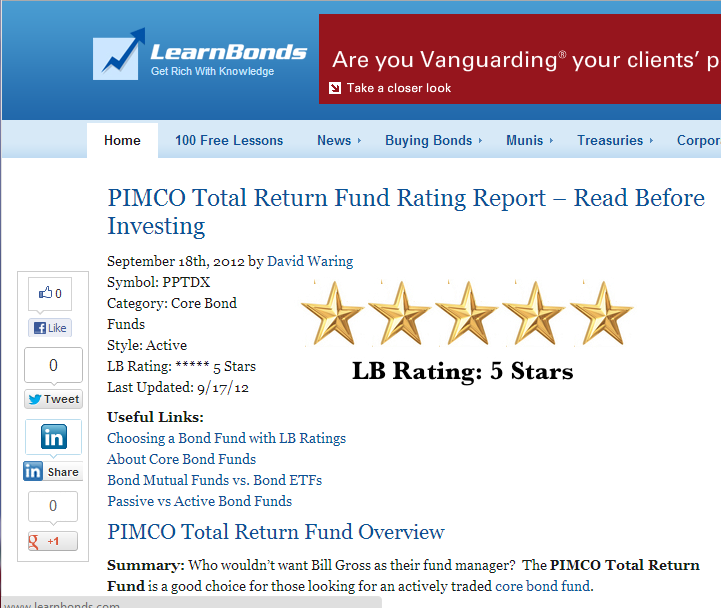





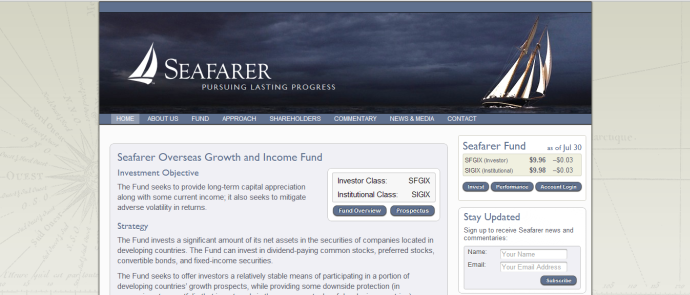
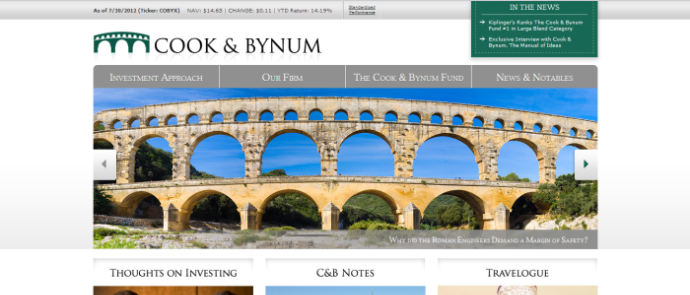

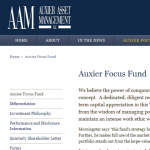
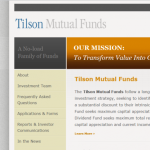

 Just as transistors have been succeeding by microchips, a third of all adults and 20% of smartphone users listen to radio via the internet. Half of them take radio in the form of podcasts, portable snippets of radio that they can listen to as they unwind at home (71%) or try to make a commute more pleasant and productive (45%). Some of us (*cough* Snowball *cough*) even use them to make time at the gym more bearable.
Just as transistors have been succeeding by microchips, a third of all adults and 20% of smartphone users listen to radio via the internet. Half of them take radio in the form of podcasts, portable snippets of radio that they can listen to as they unwind at home (71%) or try to make a commute more pleasant and productive (45%). Some of us (*cough* Snowball *cough*) even use them to make time at the gym more bearable.
 On to the weekend!
On to the weekend! An Update: MoneyLife is Here!
An Update: MoneyLife is Here!
